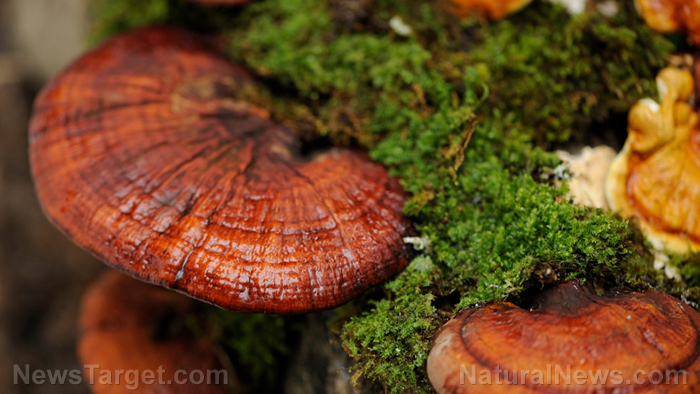Canadian study finds banned cancer-causing chemicals in 88% of household products
04/26/2023 / By Olivia Cook

If short-chain chlorinated paraffins (SCCPs) are banned, how come they are still present in everyday products?
A study published in the journal Environmental Science: Processes & Impacts reported that these banned chemicals and potential carcinogens have been discovered in a wide array of household products.
The study showed that SCCPs, a group of chemicals used in metalworking and the production of plastics, PVC, rubbers and other materials, are still widely present in household goods despite bans on the chemicals. (Related: Beware of these common household items that cause cancer.)
Steven Kutarna, a doctoral candidate at the University of Toronto and the lead author of the paper, said they found SCCPs in almost everything, which was surprising because the use of SCCPs has been prohibited in Canada since 2013 and in the United States since 2012.
The chemicals were also listed for elimination under Annex A of the 2017 Stockholm Convention on Persistent Organic Pollutants, reported Global News Canada.
Kutarna and his colleagues found SCCPs in 84 of the 96 household products they tested in Canada. The products were purchased at least one year after Canada’s 2013 prohibition of the chemicals went into effect under the Canadian Environmental Protection Act (CEPA), suggesting that chemical regulation against SCCPs has not been effective.
According to a study published in the journal Science of the Total Environment, more than a million tons of chlorinated paraffin are still produced each year.
A study published in the journal Environmental Science and Pollution Research International also reported that even in countries like Canada, where the chemicals are banned, SCCPs have been detected in dust, prompting researchers to look for an indoor source of the chemicals.
Kutarna and his team collected 96 indoor products, including electronics, plastic toys, personal care products and furniture, from Toronto stores and homes. They found SCCPs in 88 percent of the products, with the highest concentration of the chemicals found in the outer plastic coatings of two electronic devices – one of which was earbud wires.
The researchers also found high concentrations of SCCPs in children’s plastic toys, including baby chew toys and foam toys, and in toy packaging. All the toys had been purchased in 2019, a full seven years after the prohibition of the use and importation of SCCPs in Canada.
The discovery of high concentrations of SCCPs in toys is especially concerning, given that persistent chemicals are particularly dangerous for a child’s development. Children are also at greater risk of SCCP exposure via their hands and mouths coming into contact with contaminated toys.
Since the tested products were manufactured internationally, it’s likely that similar levels of SCCPs can be found in household products sold in the United States. In fact, international manufacturing may be the main reason for the presence of SCCPs, despite regulation.
Although many of the toys were bought from Dollarama, the products were imported from countries like China and Taiwan, so it wouldn’t be surprising if other stores had similar chemicals in their products.
“It may well be unintentional because these compounds are commonly used in plastics,” said Kutarna. “It may just be that manufacturers are using plastic pellets from overseas, or [SCCPs] are getting added at some point in the production chain. It’s very hard to tell where it’s coming from.”
The high cost of testing for SCCPs, as well as the complex nature of international trade, also makes the chemicals difficult to regulate, said Hui Peng, one of the study authors.
Harmful effects of SCCPs
All chlorinated paraffins are categorized as “toxic” chemicals under the CEPA. They are typically used in metalworking fluids, paints, sealants, rubber and flame retardants in plastics, explained Karl Jobst, assistant professor from the Department of Chemistry at Memorial University of Newfoundland in Canada.
In a study published in the journal Environmental Science & Technology, researchers reported that chlorinated paraffins can accumulate in human breast milk. Another study published in the journal Science of the Total Environment also found that SCCPs can kill small aquatic creatures.
Meanwhile, a study published in the journal Environment International reported that SCCPs exhibited endocrine-disrupting properties in vitro models.
SCCPs are recognized as possible carcinogens by the International Agency for Research on Cancer (IARC). A study published in the journal Fundamental and Applied Toxicology has shown that these chemicals can cause cancer in mice and rats, and are specifically damaging to the kidneys, liver and thyroid.
One of the most concerning properties of SCCPs is their persistence and their potential to bioaccumulate, Jobst said.
Once a person is exposed to SCCPs, either through inhalation of dust or hand-to-mouth contact with electronics, these chemicals can remain in their blood for many years, causing harmful effects over time.
Watch the following video to know some 10 toxic household products you should banish from your home.
This video is from the Daily Videos channel on Brighteon.com.
More related stories:
Male fertility warning: Chemicals in household items can damage sperm in men, dogs.
These common, everyday household items are DAMAGING your health.
Is hair color worth dying for?
Sources include:
Submit a correction >>
Tagged Under:
banned, cancer criminals, carcinogens, children's health, environment, poison, products, real investigations, research, SCCPs, short-chain chlorinated paraffins, toxic chemicals, toxic ingredients, toxins
This article may contain statements that reflect the opinion of the author
RECENT NEWS & ARTICLES
HealthScience.News is a fact-based public education website published by Health Science News Features, LLC.
All content copyright © 2018 by Health Science News Features, LLC.
Contact Us with Tips or Corrections
All trademarks, registered trademarks and servicemarks mentioned on this site are the property of their respective owners.




















